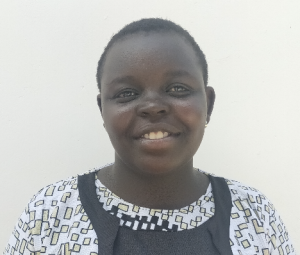The majority of people who live in Khabondi village are farmers. On a plantation-level scale, they grow sugarcane, yams, and maize for both home consumption and commercial sale. They also raise poultry and cattle, which is common in every household. Some Khabondi community members also practice brick-making. People in this area are very hardworking and self-reliant, which helps them to shoulder each other during times of challenges.
500 people in Khabondi depend on unprotected Wandati Spring as their primary year-round water source. Wandati Spring is located in a very green, vegetated area with trees and plants of different types growing on the fields and surrounding compounds.
The water crisis has a negative impact on the community since much time is wasted looking for clean water at the spring instead of going to their farms, other jobs, or school among the children.
The water source was once protected by community members, but they did not have all of the proper materials or technical expertise to secure the water point. Though some the cement wall with a discharge pipe in it remains from their work, they were not able to protect the spring's catchment area, where the water collects underground before coming out of the pipe. This means the water is not safe from contaminants and is still unsafe for drinking.
Because the water source is not secured, it is very open to all forms of contamination from both solid waste and surface runoff during the rainy season. Many cases of waterborne diseases have been reported in the area as a result of consuming the water from this source. When people are sick, no activities take place and this may lead to lagging behind in terms of development and even providing the basic necessities. Familise also have to use money for treatment which would have been spent on other vital needs leading to economic loss and lowered living standards.
"Sometimes I find it hard to try and drink the water from this source because when I think of the effects of consuming unsafe water, I feel tears going down inside my heart," said farmer Victor Wandati.
Accessing the spring is also difficult as there is no durable surface beneath the discharge pipe. Instead, community members stand in the mud and running water while fetching water. This is not only uncomfortable, but dangerous when it becomes difficult to exit the spring. Falls, spilled water, broken jerrycans, and injuries are not unheard of as a result of leaving the spring with water.
"It is had for me to access the water because it is slippery, especially during the rainy season, which makes me skid and fall down while carrying the water," recalled young Moses.
What We Can Do:
Spring Protection
Protecting the spring will help provide access to cleaner and safer water and reduce the time people have to spend to fetch it. Construction will keep surface runoff and other contaminants out of the water. With the community’s high involvement in the process, there should be a good sense of responsibility and ownership for the new clean water source.
Fetching water is a task predominantly carried out by women and young girls. Therefore, protecting the spring and offering training and support will help empower the female members of the community by freeing up more of their time and energy to engage and invest in income-generating activities and their education.
Training on Health, Hygiene, COVID-19, and More
To hold training during the pandemic, we work closely with both community leaders and the local government to approve small groups to attend training. We ask community leaders to invite a select yet representative group of people to attend training which will then act as ambassadors to the rest of the community to share what they learn. We also communicate our expectations of physical distancing and wearing masks for all who choose to attend.
The training will focus on improved hygiene, health, and sanitation habits in this community. We will also have a dedicated session on COVID-19 symptoms, transmission routes, and prevention best practices.
With the community’s input, we will identify key leverage points to alter their practices at the personal, household, and community levels to affect change. This training will help ensure participants have the knowledge they need about healthy practices and their importance to make the most of their water points as soon as the water is flowing.
Our team of facilitators will use a variety of methods to train community members. Some of these methods include participatory hygiene and sanitation transformation, asset-based community development, group discussions, handouts, and demonstrations at the spring.
One of the most important issues we plan to cover is handling, storing, and treating water. Having a clean water source will be extremely helpful, but it is useless if water gets contaminated by the time it is consumed. The community and we strongly believe that all of these components will work together to improve living standards here, which will help to unlock the potential for these community members to live better, healthier lives.
We will then conduct a small series of follow-up training before transitioning to our regularly scheduled support visits throughout the year.
Training will result in the formation of a water user committee elected by their peers that will oversee the spring's operations and maintenance. The committee will enforce proper behavior around the spring and delegate tasks that will help preserve the site, such as building a fence and digging proper drainage channels. The fence will keep out destructive animals and unwanted waste, and the drainage will keep the area’s mosquito population at a minimum.

 Protected Spring
Protected Spring
 Rehabilitation Project
Rehabilitation Project



































